Welcome to our free classical music site

Do you write about classical music? Are you a blogger? Want to team up with Classical Connect? Send us a message, let's talk!

Do you write about classical music? Are you a blogger? Want to team up with Classical Connect? Send us a message, let's talk!
July 15, 2013. John Dunstaple. With the dearth of notable birthdays this week, we again turn back to composers of years past. John Dunstaple was one of the first in a long and quite remarkable line of Renaissance composers who made England a major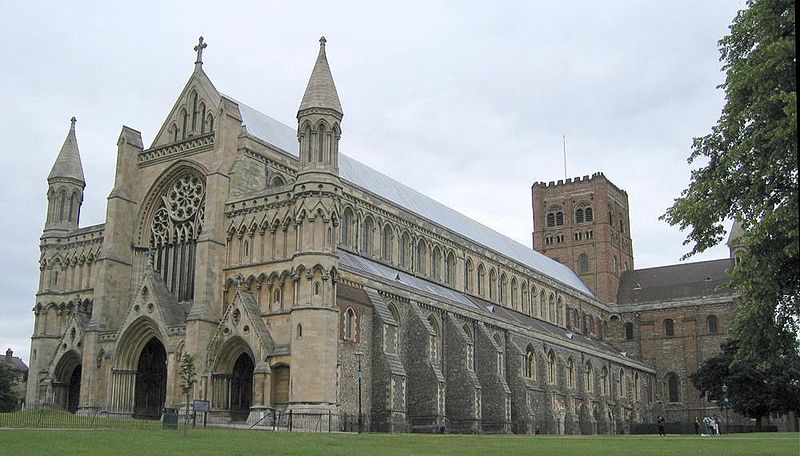 center of European music for almost two centuries. Duntsaple was born around 1390, around the same time as the famous Burgundian, Guillaume Dufay. In England, Dunstaple was followed by Robert Morton (born around 1430), Walter Lambe (1453), John Taverner (1490), Thomas Tallis (1505), William Byrd (1540), John Dowland John Bull (both born in 1563), and Orlando Gibbons (1583). These are the more famous names; there were many more, both known and unknown: the musical culture of Tudor and Jacobean England flourished as nowhere else, except probably the Franco-Flemish one in what is now northern France, Belgium and the Netherlands. Dunstaple was probably born in the town of Dunstable; the year of his birth is unknown, 1390 is a conjecture based on the timing of some compositions. He served in the court of John of Lancaster, a son of king Henry IV and a brother of Henry V. John led the British forces in many battles of the Hundred Year War with France (he was the one to capture Joan of Arc) and for a number of years was the Governor of Normandy. It’s likely that Dunstaple stayed with John in Normandy. From there his music spread over the continent. Considering that a major war was raging in France, that in itself is quite remarkable. Dunstaple’s influence was very significant, especially affecting musicians of the highly developed Burgundian school; the reason was both musical and political, as Burgundy was allied with England in its war against France. The poet Martin Le Franc, a contemporary of Dunstaple, came up with the term La Contenance Angloise, which could be loosely translated as “English manner” and said that it affected the two greatest composers of Burgundy, Guillaume Dufay and Gilles Binchois. Le Franc wrote in 1442, by then Dunstaple was back in England, serving in the court of Humphrey of Lancaster, John’s brother. In addition to writing music he also studied mathematics, was an astronomer and astrologer. While not a cleric, he was associated with St Albans Abbey (see picture above). He died in 1453. When, during the reign of Henry VIII England became Protestant, many monasteries – the main keepers of musical tradition – were "dissolved" and their libraries ruined. Most of the English manuscripts of Dunstaple’s music were lost. Fortunately, many copies remained in Italy and Germany – evidence of Dunstaple’s international fame. About 50 compositions are currently attributed to him (these attributions are not firm often challenged). Among these are two masses, a number of sections from different masses, and many motets. We’ll hear a famous motet Veni sancte spiritus. It’s performed by the Hilliard Ensemble, Paul Hillier conducting. The same ensemble performs a motet Salve Regina Misericordiae (here). Finally, the Laudantes Consort under the direction of Guy Janssens performs another hymn to Mary, the Magnificat.Permalink
center of European music for almost two centuries. Duntsaple was born around 1390, around the same time as the famous Burgundian, Guillaume Dufay. In England, Dunstaple was followed by Robert Morton (born around 1430), Walter Lambe (1453), John Taverner (1490), Thomas Tallis (1505), William Byrd (1540), John Dowland John Bull (both born in 1563), and Orlando Gibbons (1583). These are the more famous names; there were many more, both known and unknown: the musical culture of Tudor and Jacobean England flourished as nowhere else, except probably the Franco-Flemish one in what is now northern France, Belgium and the Netherlands. Dunstaple was probably born in the town of Dunstable; the year of his birth is unknown, 1390 is a conjecture based on the timing of some compositions. He served in the court of John of Lancaster, a son of king Henry IV and a brother of Henry V. John led the British forces in many battles of the Hundred Year War with France (he was the one to capture Joan of Arc) and for a number of years was the Governor of Normandy. It’s likely that Dunstaple stayed with John in Normandy. From there his music spread over the continent. Considering that a major war was raging in France, that in itself is quite remarkable. Dunstaple’s influence was very significant, especially affecting musicians of the highly developed Burgundian school; the reason was both musical and political, as Burgundy was allied with England in its war against France. The poet Martin Le Franc, a contemporary of Dunstaple, came up with the term La Contenance Angloise, which could be loosely translated as “English manner” and said that it affected the two greatest composers of Burgundy, Guillaume Dufay and Gilles Binchois. Le Franc wrote in 1442, by then Dunstaple was back in England, serving in the court of Humphrey of Lancaster, John’s brother. In addition to writing music he also studied mathematics, was an astronomer and astrologer. While not a cleric, he was associated with St Albans Abbey (see picture above). He died in 1453. When, during the reign of Henry VIII England became Protestant, many monasteries – the main keepers of musical tradition – were "dissolved" and their libraries ruined. Most of the English manuscripts of Dunstaple’s music were lost. Fortunately, many copies remained in Italy and Germany – evidence of Dunstaple’s international fame. About 50 compositions are currently attributed to him (these attributions are not firm often challenged). Among these are two masses, a number of sections from different masses, and many motets. We’ll hear a famous motet Veni sancte spiritus. It’s performed by the Hilliard Ensemble, Paul Hillier conducting. The same ensemble performs a motet Salve Regina Misericordiae (here). Finally, the Laudantes Consort under the direction of Guy Janssens performs another hymn to Mary, the Magnificat.Permalink
July 8, 2013. Ottorino Respighi and Giovanni Battista Sammartini. Ottorino Respighi, one of the most interesting Italian composers of the early 20th century, was born on July 9, 1879 in Bologna. We’ve written about him rather extensively in the past, so to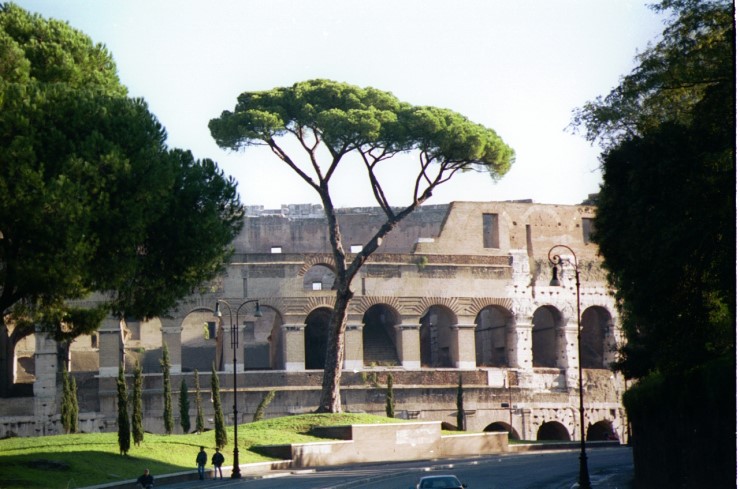 celebrate his birthday today we’ll present one of his best-known compositions, Pines of Rome, which was premiered in December of 1924. Pines is the second piece in the “Roman Trilogy” (Fountains of Rome, the first one, was composed in 1917; Roman Festivals, of 1928, concluded the cycle). All three sections of the Trilogy are written as a free-form symphonic tone poem, the style popular since the times of Liszt. Pines is programmatic: Rome is famous for its pine trees, and the four parts of the Pines depict them in four different areas of Rome. First is Pines of the Villa Borghese, then Pines Near a Catacomb (Respighi didn’t indicate which ones in particular he had in mind); Pines of the Janiculum follow (Janiculum is a hill in Trastevere, across the Tiber from the ancient part of Rome and next to the Vatican. The top of the hill, with its somewhat run-down little park, affords magnificent views of the city). The final part of Pines of Rome is called Pines of the Appian Way and, according to Respighi, represents a victorious legion marching on this ancient road toward Rome. We’ll hear Pines of Rome in the performance by the Chicago Symphony orchestra, Fritz Reiner conducting (Reiner gets the best out of the marvelous Chicago brass in the Appian Way section).
celebrate his birthday today we’ll present one of his best-known compositions, Pines of Rome, which was premiered in December of 1924. Pines is the second piece in the “Roman Trilogy” (Fountains of Rome, the first one, was composed in 1917; Roman Festivals, of 1928, concluded the cycle). All three sections of the Trilogy are written as a free-form symphonic tone poem, the style popular since the times of Liszt. Pines is programmatic: Rome is famous for its pine trees, and the four parts of the Pines depict them in four different areas of Rome. First is Pines of the Villa Borghese, then Pines Near a Catacomb (Respighi didn’t indicate which ones in particular he had in mind); Pines of the Janiculum follow (Janiculum is a hill in Trastevere, across the Tiber from the ancient part of Rome and next to the Vatican. The top of the hill, with its somewhat run-down little park, affords magnificent views of the city). The final part of Pines of Rome is called Pines of the Appian Way and, according to Respighi, represents a victorious legion marching on this ancient road toward Rome. We’ll hear Pines of Rome in the performance by the Chicago Symphony orchestra, Fritz Reiner conducting (Reiner gets the best out of the marvelous Chicago brass in the Appian Way section).
It comes as a surprise that we don’t know the date of birth of another Italian composer, Giovanni Battista Sammartini. It’s especially strange because Sammartini was born in 1700 in Milan – not in the Middle Ages in some small village in the backward Basilicata. Milan at that time was administered by the Austrians, well known for their meticulous bureaucracy. Sammartini’s father, Alexis Saint-Martin, was French and a professional oboist. He gave Giovanni his first musical lessons. By the age of 20, Sammartini was playing oboe in the Teatro Regionale Ducal. When Sammartini was about 25, he was appointed the music master (maestro di cappella) at the famous Basilica of Sant'Ambrogio. He held this position for the rest of his life. As composer of church music, he soon became famous outside of Italy. Many musicians came to Milan to study with him, the most famous being Christoph Willibald Gluck. Sammartini didn’t confine his creativity exclusively to liturgical music; eventually he extended it to other musical forms, especially symphony and chamber music. He composed at least 68 symphonies (that’s the number recovered in the archives of publishing houses) and is credited as an innovator of this form. As a symphonist, he influenced Johann Christian Bach, and even Haydn and Mozart (young Mozart met him in Milan while visiting the city in 1770). In addition to symphonies, Sammartini wrote four operas and many sonatas for violin, cello, flute, and keyboard. Soon after Sammartini’s death in 1775 his music was all but forgotten, and remained such for the next century and a half. In the early 20th century the Italians’ interest in their musical heritage reawakened (Ottorino Respighi did much to uncover the forgotten music of Vivaldi, Monteverdi, and Marcello). In 1913 much of Sammartini’s music was rediscovered in the archives. His music has remained quite popular ever since. Here is his lovely Cello Sonata in G Major. It’s performed by the great cellist Leonard Rose. Leonid Hambro is on the piano.Permalink
July 1, 2013. Gustav Mahler. Symphony no. 1. This week we’re celebrating the 153rd birthday of the great Austrian composer. Mahler was born on July 7 in Bohemia, then part of the Austrian Empire. His Jewish, German speaking family moved to the town of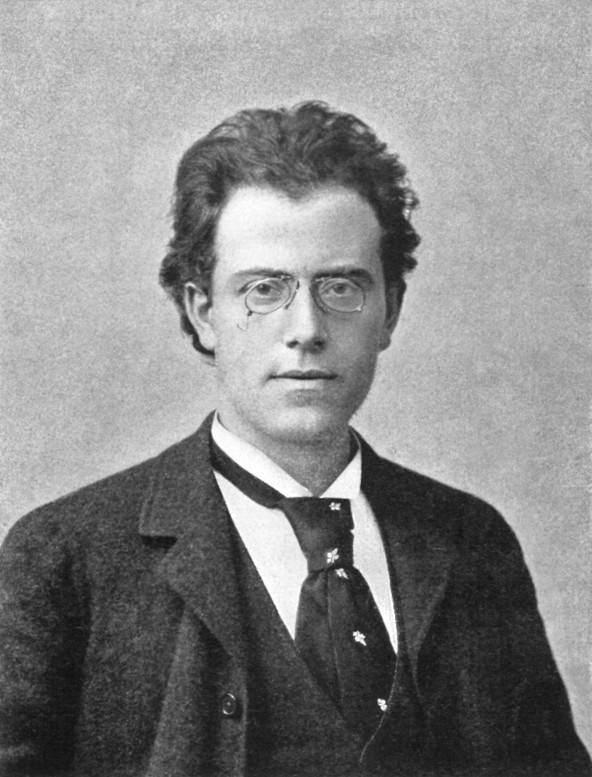 Iglau (now called Jihlava) when Gustav was an infant. Mahler started playing piano at his grandparent’s house when he was four. An inattentive student at a local school, he was sent to Prague by his father, who believed that Gustav needed a good education. Gustav was unhappy there and soon returned to Iglau. In 1875, he was accepted at the piano department of the Vienna conservatory. There he also took composition classes (none of his early pieces survive). One of his friends at the conservatory was the future songwriter Hugo Wolf. Mahler revered the music of Anton Bruckner and attended several of his lectures. In 1877, Mahler and a friend, Rudolf Krzyzanowski, went to the premier of Bruckner’s Third symphony, which turned into a disaster. The designated conductor, Johann von Herbeck, had died a month before the premier, so Bruckner, a poor conductor himself, had to lead the orchestra. Most of the public stormed out of the hall, and by the end of the performance even the musicians left the stage. In an attempt to mitigate the blow, Mahler and Krzyzanowski prepared a piano duo version of the symphony and presented it to Bruckner. (The devastated Bruckner, easily affected by criticism, set up to rewrite the symphony and created two more versions, one in 1877, and another one in 1888-89). Throughout Mahler’s entire career, Bruckner was a strong influence (to a large extent, so was Wagner).
Iglau (now called Jihlava) when Gustav was an infant. Mahler started playing piano at his grandparent’s house when he was four. An inattentive student at a local school, he was sent to Prague by his father, who believed that Gustav needed a good education. Gustav was unhappy there and soon returned to Iglau. In 1875, he was accepted at the piano department of the Vienna conservatory. There he also took composition classes (none of his early pieces survive). One of his friends at the conservatory was the future songwriter Hugo Wolf. Mahler revered the music of Anton Bruckner and attended several of his lectures. In 1877, Mahler and a friend, Rudolf Krzyzanowski, went to the premier of Bruckner’s Third symphony, which turned into a disaster. The designated conductor, Johann von Herbeck, had died a month before the premier, so Bruckner, a poor conductor himself, had to lead the orchestra. Most of the public stormed out of the hall, and by the end of the performance even the musicians left the stage. In an attempt to mitigate the blow, Mahler and Krzyzanowski prepared a piano duo version of the symphony and presented it to Bruckner. (The devastated Bruckner, easily affected by criticism, set up to rewrite the symphony and created two more versions, one in 1877, and another one in 1888-89). Throughout Mahler’s entire career, Bruckner was a strong influence (to a large extent, so was Wagner).
Mahler graduated from the Conservatory in 1878. Two years later he got his first conducting job, in a small theater near Linz. A year later he was hired by the major theater in Laibach (now Ljubljana, the capital of Slovenia). There Mahler conducted his first important opera, Verdi’s Il Trovatore. During the next several years he moved from one provincial town to another, working as a conductor in small opera theaters. His breakthrough came in 1886, when Mahler received a six-year contract with the Leipzig Opera, and also a position with the Neues Deutsches Theater in Prague. In Prague, the German theater was supposed to compete with the National Theater, where Smetana’s operas were all the rage, so Mahler staged operas by Mozart and Wagner. Alas, his association with the theater was brief: a personal conflict forced him to quit the same year. Things were not much easier in Leipzig, where the famous Arthur Nikisch was not happy with the arrival of the talented rival. In Leipiz Mahler successfully staged Wagner’s The Ring cycle, and operas by Carl Maria von Weber, whose grandson he befriended.
It was during that time that Mahler composed his first symphony. It was not his first work: he composed the original version of the Songs of a Wayfarer in 1885 and some other songs earlier, although he didn’t publish them till some years later. It was, though, his first attempt at a symphonic work. And what a momentous attempt! It’s hard to think of another first symphony of such impact, originality and audacity. Mahler was not afraid to mix together things high and low, earthly and ethereal. He used tunes from German folk songs, quotes from his own Wayfarer cycles, the unexpectedly funereal Frère Jacques and the sounds of a Klezmer band. He wrote music of naked emotions that would’ve sounded vulgar in a different context, and then created grandiose developments that elevate it to nearly religious fervor. And by the force of his genius he melded all this material into 55 minutes of music of tremendous intensity. The symphony was premièred at the Vigadó Concert Hall, Budapest in 1889, with Mahler conducting, but was poorly received. The first two performances (the second was given at Hamburg in October 1893, also with Mahler on the podium) contained an extra movement, Blumine, which Mahler eventually took out. All later versions contain four movements. We’ll hear it in the performance of the Chicago Symphony, Sir Georg Solti conducting.
PermalinkJune 24, 2013. Andrea and Giovanni Gabrieli. Yet again we’re celebrating composers whose birthdays remain unknown to music historians, but who were very important to the development of the Western musical tradition. Andrea Gabrieli, a Venetian, was born around 1532. If that’s the case (some other sources place his birth earlier, in the 1520s), he was seven years younger than Palestrina and about the same age as Orlando di Lasso.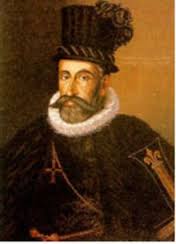 At the time, Franco-Flemish composers were the leading creative force in Italy, and there’s some evidence that Andrea took lessons from one of them, Adrian Willaert, who is considered the founder of the Venetian School of music. From Willaert he learned how to write polyphonic music. He spent some time in Verona and then returned to Venice and settled in Cannaregio, the northern district of the city (the area where the first Jewish Ghetto was created at the beginning of the century). Around 1555 he competed, unsuccessfully, for the position of an organist at the San Marco. In 1562 he traveled to Germany and while in Munich met Orlando di Lasso. Both men benefited from this relationship, exchanging ideas and learning from each other. In 1564 Gabrieli returned to Venice and in 1566 received the coveted position of an organist at the San Marco cathedral (as the second organistuntil 1584, when he was promoted to the position of the first organist). His duties at San Marco included composing, and not just the church music but also music for official ceremonies. For example, he wrote music for the celebrations of the historic victory of the Venetian fleet over the Ottoman Turks at Lepanto in 1571. Later in his life Andrea became a teacher. His most famous pupil was his own nephew, Giovanni. Here is Andrea Gabrieli’s Magnificat for three choirs; it’s performed by ensemble Chanticleer.
At the time, Franco-Flemish composers were the leading creative force in Italy, and there’s some evidence that Andrea took lessons from one of them, Adrian Willaert, who is considered the founder of the Venetian School of music. From Willaert he learned how to write polyphonic music. He spent some time in Verona and then returned to Venice and settled in Cannaregio, the northern district of the city (the area where the first Jewish Ghetto was created at the beginning of the century). Around 1555 he competed, unsuccessfully, for the position of an organist at the San Marco. In 1562 he traveled to Germany and while in Munich met Orlando di Lasso. Both men benefited from this relationship, exchanging ideas and learning from each other. In 1564 Gabrieli returned to Venice and in 1566 received the coveted position of an organist at the San Marco cathedral (as the second organistuntil 1584, when he was promoted to the position of the first organist). His duties at San Marco included composing, and not just the church music but also music for official ceremonies. For example, he wrote music for the celebrations of the historic victory of the Venetian fleet over the Ottoman Turks at Lepanto in 1571. Later in his life Andrea became a teacher. His most famous pupil was his own nephew, Giovanni. Here is Andrea Gabrieli’s Magnificat for three choirs; it’s performed by ensemble Chanticleer.
Giovanni, the more famous of the Gabrielis, was also born in Venice sometime between 1554 and 1557. As a youth he studied with his uncle, whom he revered and who was a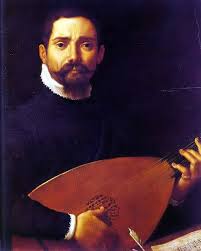 father figure for Giovanni. Later, between 1575 and 1579, also following in the steps of his uncle, he went to Germany to study with Orlando di Lasso in Munich. He returned to Venice in 1584 and succeeded Andrea as the second organist at the San Marco. Soon after he became the principal organist at the Scuola Grande di San Rocco, one of the most influential confraternities in Venice (today it’s mostly famous for its magnificent frescoes by Tintoretto, who was still working on them at the time of Gabrieli’s employ). Like his uncle, Giovanni also became an important teacher: one of his pupils was Heinrich Schütz, who became a major early Baroque composer, probably the most significant German composer before Johann Sebastian Bach. Giovanni composed a large number of purely instrumental music (for example, his Sacrae symphoniae) and a large number of choral motets. His fame spread all over Italy, on par with Palestrina’s; one ruled the music world of Rome, the other – in Venice. Gabrieli, who in his last years was often sick and could not perform his duties at the Cathedral, died on April 12, 1612, in Venice. We’ll hear Giovanni Gabrieli’s In Ecclesiis. It was written in a typical Venetian ”polychoral” manner, that is to be performed by several choirs. It was also written specifically for the Cathedral of San Marco: each choir was to occupy a separate position in this magnificent church. It is performed (here) by the Choir of King's College and Philip Jones Brass Ensemble.Permalink
father figure for Giovanni. Later, between 1575 and 1579, also following in the steps of his uncle, he went to Germany to study with Orlando di Lasso in Munich. He returned to Venice in 1584 and succeeded Andrea as the second organist at the San Marco. Soon after he became the principal organist at the Scuola Grande di San Rocco, one of the most influential confraternities in Venice (today it’s mostly famous for its magnificent frescoes by Tintoretto, who was still working on them at the time of Gabrieli’s employ). Like his uncle, Giovanni also became an important teacher: one of his pupils was Heinrich Schütz, who became a major early Baroque composer, probably the most significant German composer before Johann Sebastian Bach. Giovanni composed a large number of purely instrumental music (for example, his Sacrae symphoniae) and a large number of choral motets. His fame spread all over Italy, on par with Palestrina’s; one ruled the music world of Rome, the other – in Venice. Gabrieli, who in his last years was often sick and could not perform his duties at the Cathedral, died on April 12, 1612, in Venice. We’ll hear Giovanni Gabrieli’s In Ecclesiis. It was written in a typical Venetian ”polychoral” manner, that is to be performed by several choirs. It was also written specifically for the Cathedral of San Marco: each choir was to occupy a separate position in this magnificent church. It is performed (here) by the Choir of King's College and Philip Jones Brass Ensemble.Permalink
June 17, 2013. Stravinsky and the Rite of Spring. Igor Stravinsky was born on this day in 1882, but just a couple weeks ago we passed another significant milestone: the one hundredth anniversary of the premier of Le Sacre du printemps, or The Rite of Spring, his seminal achivement. The event took place in Paris on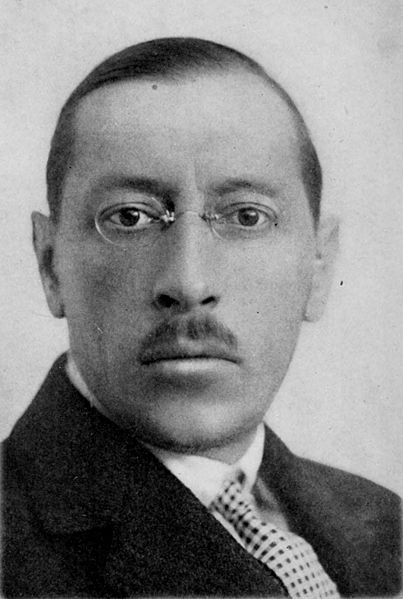 May 29, 1913 in the newly opened Théâtre des Champs-Élysées. The ballet was performed by Sergei Diaghilev’s Ballets Russes company; it was choreographed by Vaslav Nijinsky; Nikolai Roerich created the costumes and stage design. Stravinsky, then 31 years old, was already successful and quite famous. Three years earlier he wrote music for his first ballet, The Firebird, also for Ballets Russe (Diagilev, the impresario, first approached more established composers, Liadov and Tcherepnin, but eventually gave the commission to Stravinsky). The Firebird was a triumph, a breakthrough both for Stravinsky and Diagilev, who immediately asked the composer to collaborate with him on another project. Stravinsky proposed The Great Sacrifice, a ballet he was discussing with Nikolai Roerich, which would eventually become The Rite of Spring; and Diagilev agreed. Stravinsky started working on it the same year, 1910, but soon switched to a different project; Diagilev, with his keen ear, decided that it’s worth staging, and soon Petrushka was born. If anything, it was even more successful than The Firebird: the immensely talented Vaslav Nijinsky danced the title role, created for him by Mikhail Fokine, and the celebrated painter Alexandre Benois designed the sets. Soon after the premier Stravinsky returned to The Rite. He was living in Clarens, a village on the shores of Lake Geneva, working in a small
May 29, 1913 in the newly opened Théâtre des Champs-Élysées. The ballet was performed by Sergei Diaghilev’s Ballets Russes company; it was choreographed by Vaslav Nijinsky; Nikolai Roerich created the costumes and stage design. Stravinsky, then 31 years old, was already successful and quite famous. Three years earlier he wrote music for his first ballet, The Firebird, also for Ballets Russe (Diagilev, the impresario, first approached more established composers, Liadov and Tcherepnin, but eventually gave the commission to Stravinsky). The Firebird was a triumph, a breakthrough both for Stravinsky and Diagilev, who immediately asked the composer to collaborate with him on another project. Stravinsky proposed The Great Sacrifice, a ballet he was discussing with Nikolai Roerich, which would eventually become The Rite of Spring; and Diagilev agreed. Stravinsky started working on it the same year, 1910, but soon switched to a different project; Diagilev, with his keen ear, decided that it’s worth staging, and soon Petrushka was born. If anything, it was even more successful than The Firebird: the immensely talented Vaslav Nijinsky danced the title role, created for him by Mikhail Fokine, and the celebrated painter Alexandre Benois designed the sets. Soon after the premier Stravinsky returned to The Rite. He was living in Clarens, a village on the shores of Lake Geneva, working in a small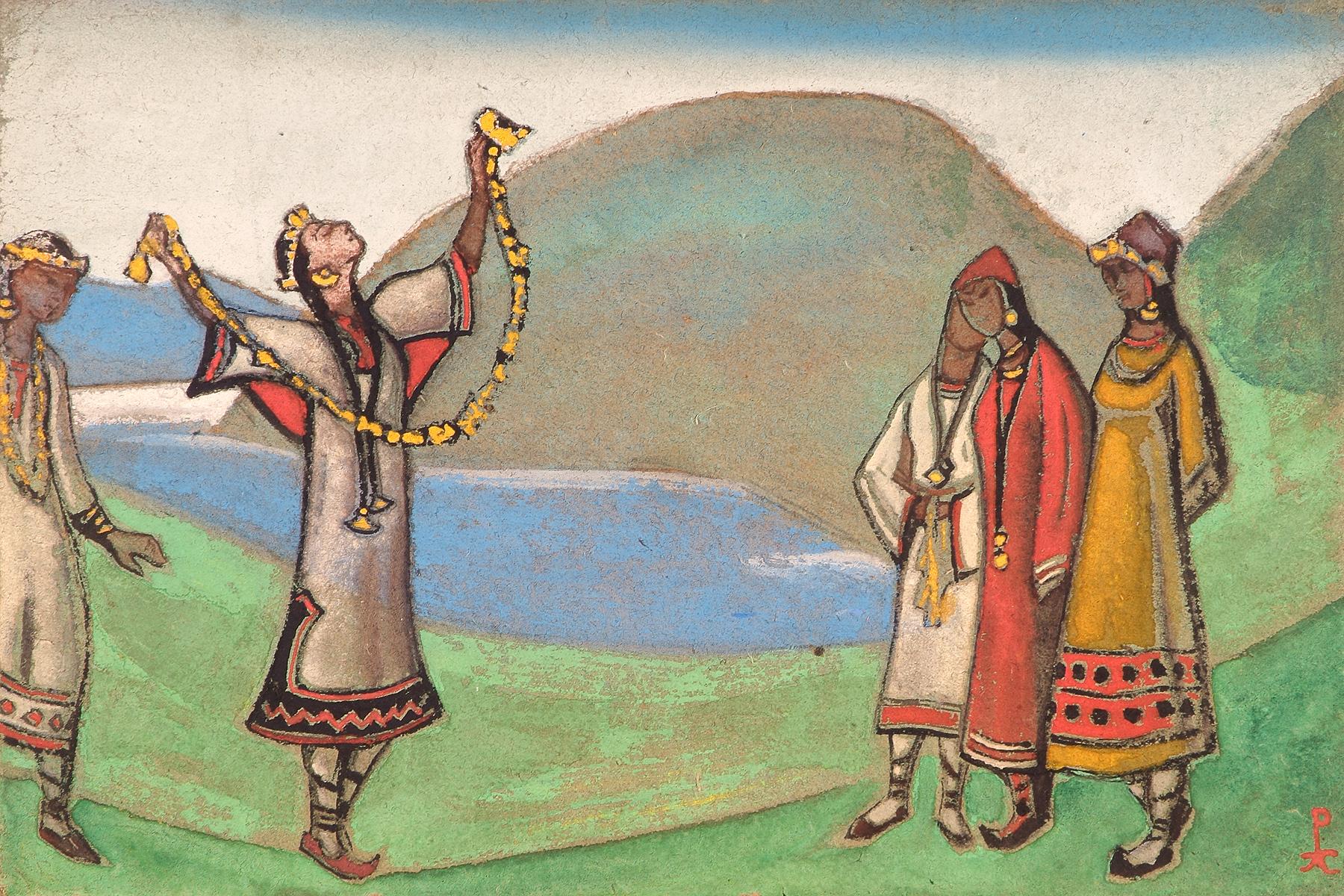 room with a piano and practically no furniture. He completed the first half (The Adoration of the Earth) in the summer of 1912, and even prepared a version for four hands, which he performed with Claude Debussy in Paris. The second half (The Sacrifice) and the orchestration were finished in March of 1912. He showed the score to Maurice Ravel, who thought it a very important piece of music. Pierre Monteux, then the conductor of the Ballets Russes and not a big fan of the score, suggested some changes that Stravinsky accepted.
room with a piano and practically no furniture. He completed the first half (The Adoration of the Earth) in the summer of 1912, and even prepared a version for four hands, which he performed with Claude Debussy in Paris. The second half (The Sacrifice) and the orchestration were finished in March of 1912. He showed the score to Maurice Ravel, who thought it a very important piece of music. Pierre Monteux, then the conductor of the Ballets Russes and not a big fan of the score, suggested some changes that Stravinsky accepted.
The premier turned into a major scandal. Protests started almost from the beginning, even before the curtain rose to reveal the stamping dancers, and it went downhill from there. Witnesses said that the audience was screaming so loudly that it was almost impossible to hear the music. Stravinsky soon left the hall and watched the rest of the performance from the wings. Both the music and Nijinsky’s choreography were offensive to many in the audience. With passions heating up, a fight broke out in the hall. Eventually people’s ire turned to the orchestra and all kinds of things flew into the pit; the stoic Monteux continued conducting without interruptions (several arrests were made after the performance). The public settled down somewhat during the second half; there were even curtain calls at the end. Some critics thought the music “barbarous,” and it’s said that Camille Saint-Saëns left the theater in disgust; Puccini called the music “cacophony.” This didn’t stop Diagilev from taking the troupe to London, were the response was not as hostile. Critical opinion, however, changed rather quickly. These days The Rite is acknowledged as one of the most influential pieces of music of the 20th century, a masterpiece that influenced generations of composers. It’s also one of the most often recorded compositions. We’ll hear it in the performance by the San Francisco Symphony Orchestra, Michael Tilson Thomas conducting.
PermalinkJune 10, 2013. Thomas Tallis. Even though the ever-popular Edvard Grieg, who wrote many wonderful tunes and became the first national composer of the newly independent Norway, was born this week on June 15, 1843, we’ll write about him some other time.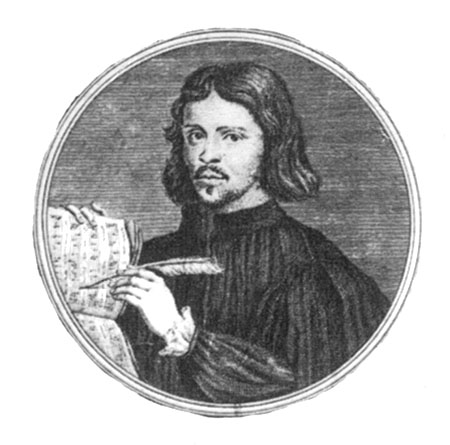 Today we’ll remember a composer whose date of birth, together with much of the details of his life, were lost in centuries past: Thomas Tallis. What we do know is that he was born early in the 16th century (1505 is the commonly assumed year). We also know that he worked as on organist in the Dover priory around 1530, and later at the Canterbury Cathedral. Around 1543 he became a Gentleman of the Chapel Royal, a group of clerics and musicians who traveled with the British monarchs in order to serve their spiritual needs. In this capacity he played and composed for four kings and queens from Henry VIII to Elizabeth I. In 1575 Tallis, who was then 70, and the composer William Byrd, half his age at the time, were given a monopoly to publish music and music paper. Their first publication, Cantiones Sacrae, was a set of 34 motets, 16 by Tallis and 18 by Byrd, and it was the only music published during Tallis’s lifetime.
Today we’ll remember a composer whose date of birth, together with much of the details of his life, were lost in centuries past: Thomas Tallis. What we do know is that he was born early in the 16th century (1505 is the commonly assumed year). We also know that he worked as on organist in the Dover priory around 1530, and later at the Canterbury Cathedral. Around 1543 he became a Gentleman of the Chapel Royal, a group of clerics and musicians who traveled with the British monarchs in order to serve their spiritual needs. In this capacity he played and composed for four kings and queens from Henry VIII to Elizabeth I. In 1575 Tallis, who was then 70, and the composer William Byrd, half his age at the time, were given a monopoly to publish music and music paper. Their first publication, Cantiones Sacrae, was a set of 34 motets, 16 by Tallis and 18 by Byrd, and it was the only music published during Tallis’s lifetime.
Tallis lived till the age of 80, and during his life England was transformed from a Catholic country with a Latin liturgy to an Anglican one, with a liturgy in English. He wrote both, and his output is divided between Latin and English pieces. Among his Latin works, the setting of The lamentations of Jeremiah were widely praised then and still remain one of his most celebrated compositions. You can listen to it here, in the performance of the ensemble Magnificat directed by Philip Cave. Another hauntingly beautiful example is his setting of Miserere Nostri. It’s performed (here) by the eponymous ensemble, The Tallis Scholars. And here is an example of his "English" music, a set of nine simple but beautiful psalms called "Tunes for Archbishop Parker's Psalter," performed by the British ensemble Stile Antico. The Tunes were written in 1567 for Matthew Parker, the first Anglican Archbishop of Canterbury. The English composer Ralph Vaughan Williams used the third Tune, Why Fum'th In Fight (it’s the first one to be performed in this recording), for his Fantasia on a Theme by Thomas Tallis. The Tunes are still included in many Anglican hymnals.
Two notes: the portrait above was made by Gerard Vandergucht, a British engraver of Flemish descent, about 150 year after Tallis’s death, so there’s no certainty that he actually looked anything like it. There were no portraits of Tallis made during his life, so we have to contend with this one. Another note: apparently, Tallis’s music, a motet called Spem in Alium (here) is mentioned in the enormously popular soft-core novel Fifty Shades of Grey. As a result, since the publication of the novel the sales of Tallis’s album with this motet exploded, reaching number one on the UK classical music charts. Whatever it is that brings the listeners to his music, Tallis would’ve been pleased.
Permalink